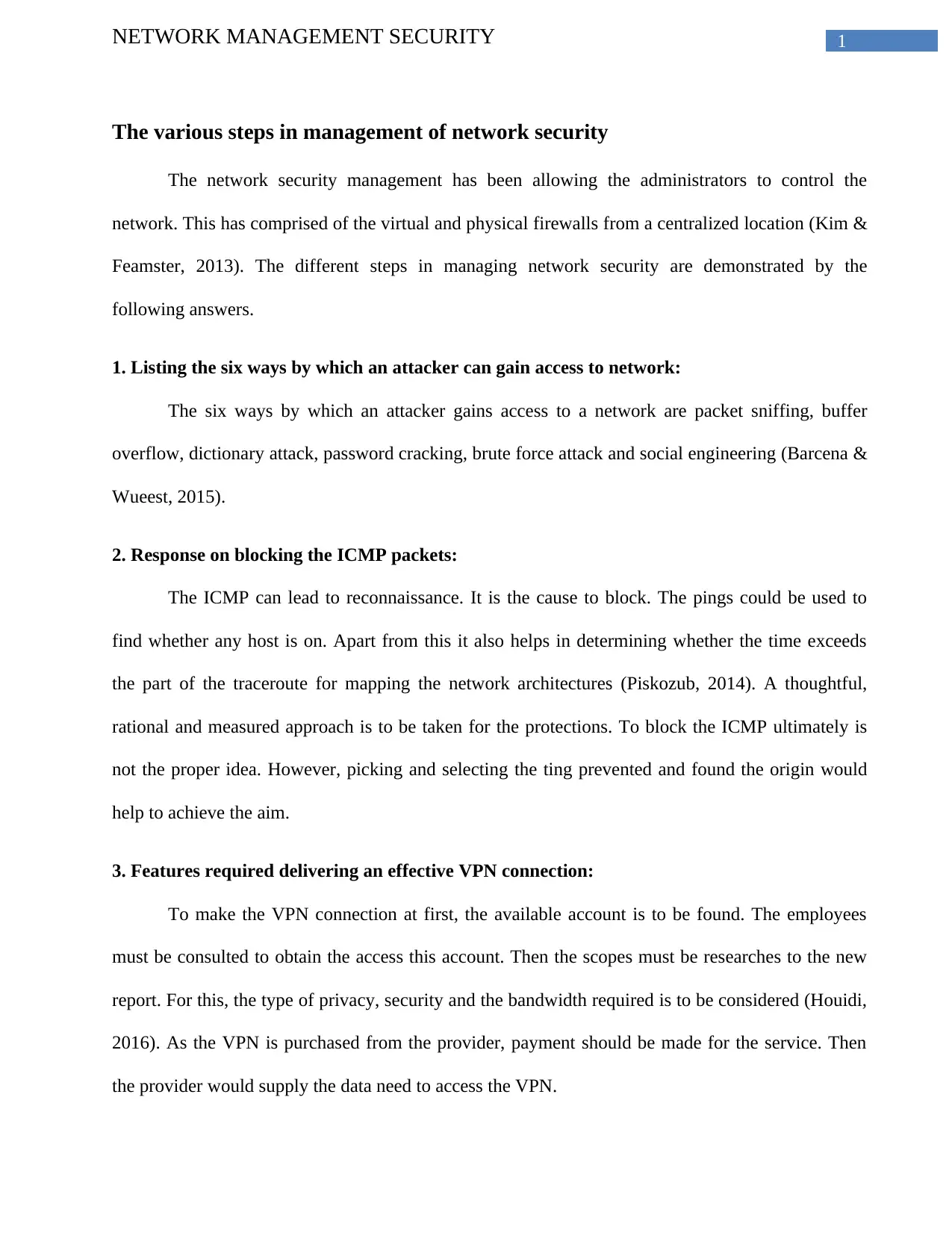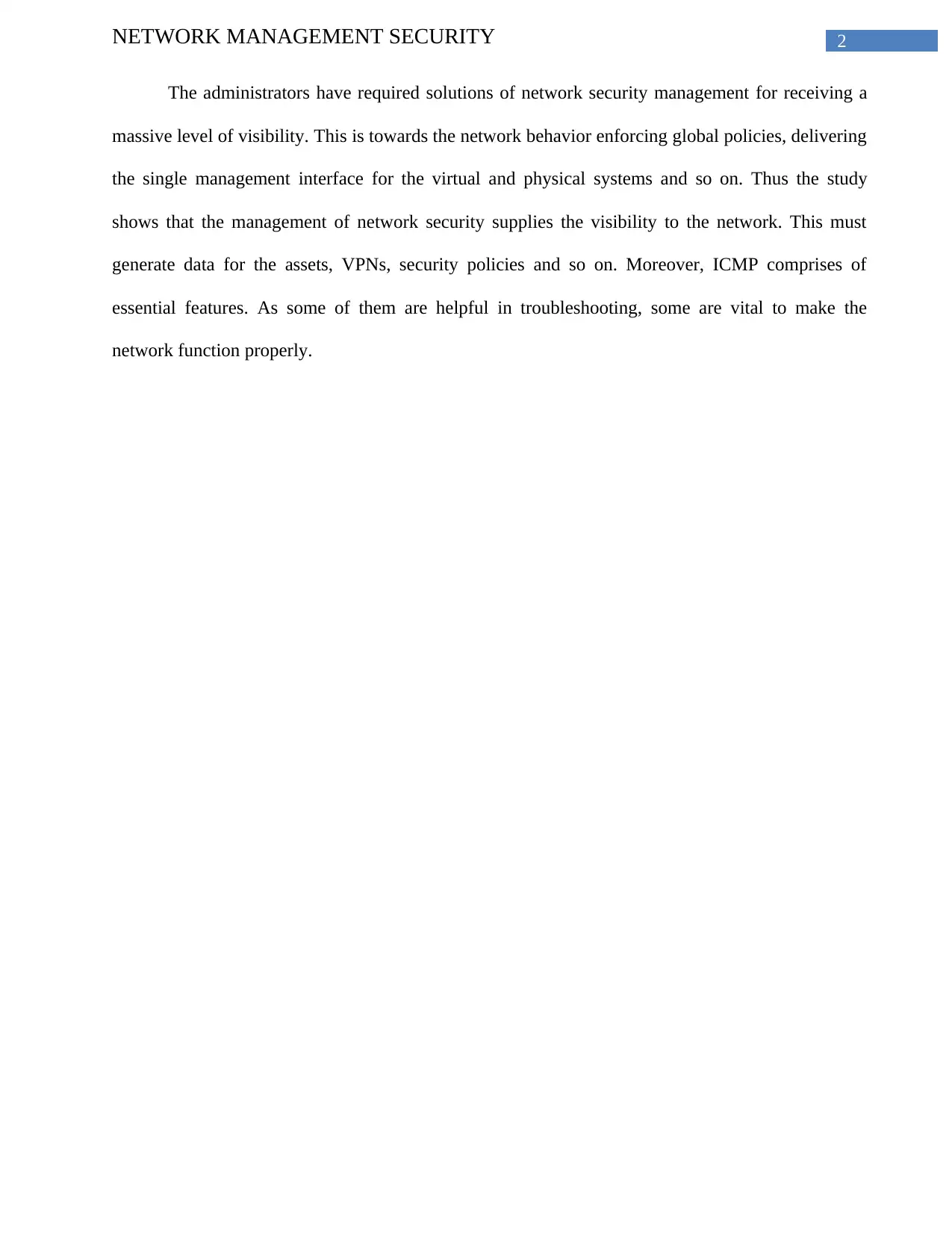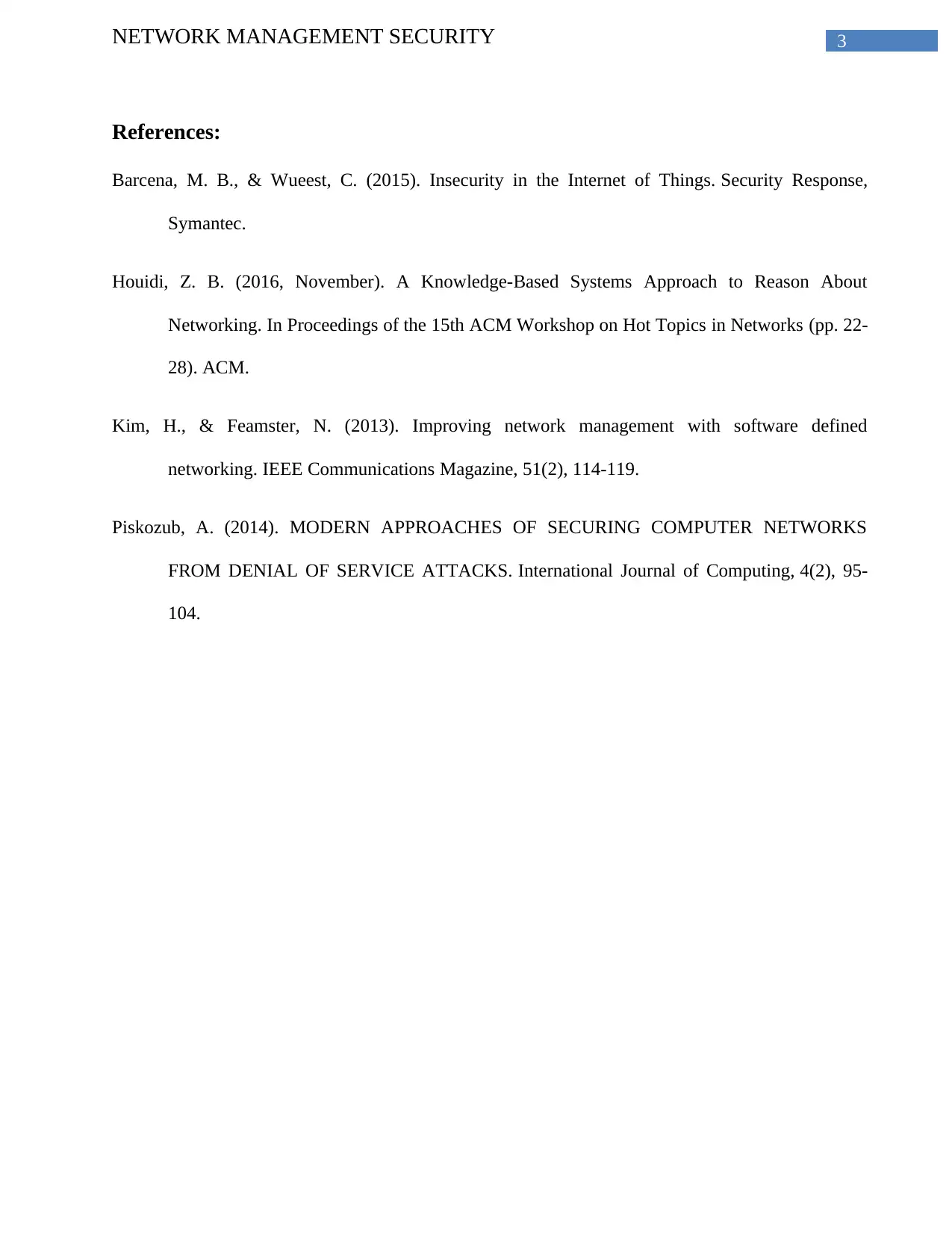Comprehensive Analysis of Network Security Management Strategies
VerifiedAdded on 2023/06/15
|5
|593
|119
Report
AI Summary
This report provides an overview of network security management, detailing various aspects such as methods attackers use to gain network access, considerations for blocking ICMP packets, and features necessary for effective VPN connections. It identifies six common attack vectors: packet sniffing, buffer overflow, dictionary attack, password cracking, brute force attack, and social engineering. The report also discusses the implications of blocking ICMP packets, noting that while ICMP can be used for reconnaissance, it also serves essential troubleshooting and network functionality purposes. Furthermore, it outlines the key requirements for establishing a secure and effective VPN connection, emphasizing the importance of account access, scope research, and the selection of appropriate privacy, security, and bandwidth levels. The document concludes by highlighting the need for network security management solutions that provide comprehensive visibility, enforce global policies, and offer a unified management interface for both virtual and physical systems, ultimately ensuring robust network protection. Desklib offers a wealth of similar solved assignments and past papers to aid students in their studies.
1 out of 5









![[object Object]](/_next/static/media/star-bottom.7253800d.svg)